

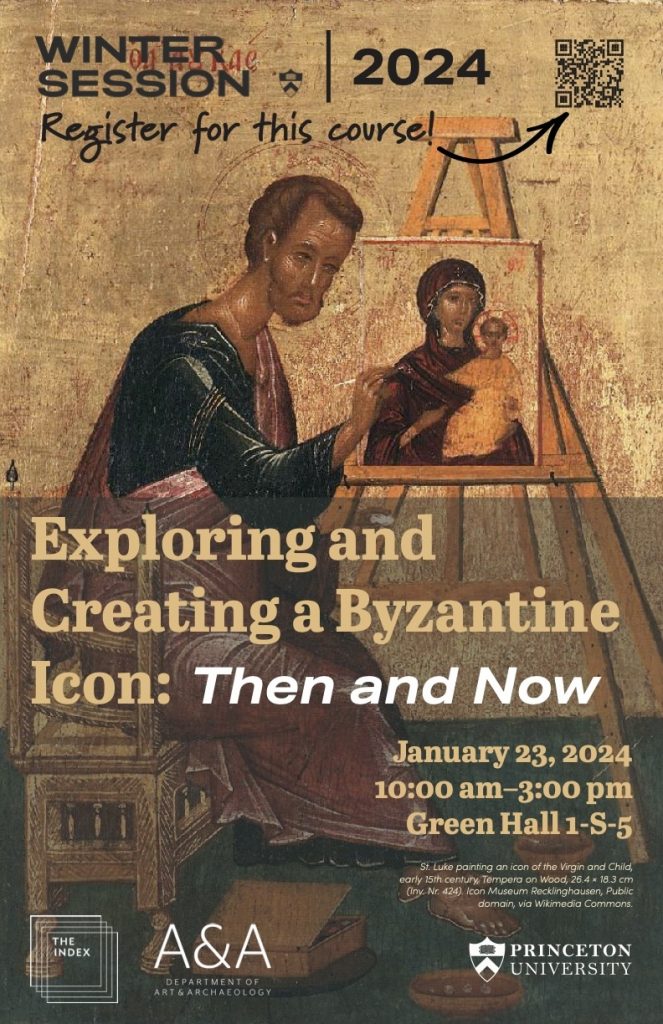
The Index of Medieval Art was delighted to offer its second Wintersession, “Exploring and Creating a Byzantine Icon: Then and Now,” on January 23rd, 2024. Its fifteen participants included Princeton staff, faculty, undergraduate and graduate students. In the first part of the workshop, they learned about the history and creation of Byzantine icons. In the second, they had the opportunity to create their own icons using modern artistic materials.
Index Art History Specialists Maria Alessia Rossi and Jessica Savage led the workshop, opening with a presentation on the Index resources and delving into some questions about iconography using large reproductions of the icons from Mount Sinai, generously loaned by Visual Resources, as a basis. The group discussed the iconographic details in works of art, exploring the subject matter in icons that generate tags in the Index database. Jessica invited the students to observe the figures and scene in a twelfth-century Sinai icon of the Annunciation (Index system no. 57527), looking for major and minor details in the painting, as small as an octopus swimming underwater. Alessia introduced participants to the way Byzantine icons were displayed and their devotional practices by examining a folio from the Hamilton Greek Psalter (Index system no. 103381).
The first guest lecturer, local icon painter Maureen McCormick, showed the participants how to make the binder for egg tempera paint by mixing egg yolk and … No, not water … rather, white wine! Maureen showed the class all the tricks of the icon painter, including where to buy authentic pigments, how to grind them, and how to literally use one’s breath to “blow” gold leaf onto a red clay bole sample, which formed the nimbus of a saint. A short Instagram reel was made by Kirstin Ohrt, Communications Specialist in the Department of Art & Archaeology, to show Maureen’s breathtaking lesson in action, and you can check it out here: https://www.instagram.com/artandarchaeologyprinceton/reel/C2ud3gZLAJW/.
The afternoon session was led by Department of Art & Archaeology graduate student and icon painter, Megan Coates, who spoke about her own work with icons, as well as their importance for memory and communication. As part of an organized hands-on activity, participants created their own Byzantine icons using templates designed by Megan or choosing their own models from books or memory. Acrylic paint, brushes, drawing materials, gessoed panels, as well as gold and silver leaf materials were supplied by the Princeton Office of Campus Engagement. The outcomes were astonishing!
It was a pleasure to observe the participant’s ideas and skillful process unfold as they engaged in the long-treasured art of icon-making. One participant Sigrid Adriaenssens, Professor of Civil and Environmental Engineering, wrote to us after Wintersession and said, “Thank you so much for organizing this workshop. It opened a whole new world to me that I didn’t know existed at Princeton. I really enjoyed learning about the Index, icons, and how they are made. The speakers Maureen and Megan were also very interesting and exciting to listen to!” Another participant, Zi (Zoe) Wang, visiting doctoral candidate and researcher at Princeton from the Central Academy of Fine Arts in Beijing, said she felt transported by the instrumental music we played during the hands-on activity. Zoe said about the experience, it was like “immersing myself in meditation.” We couldn’t agree more!
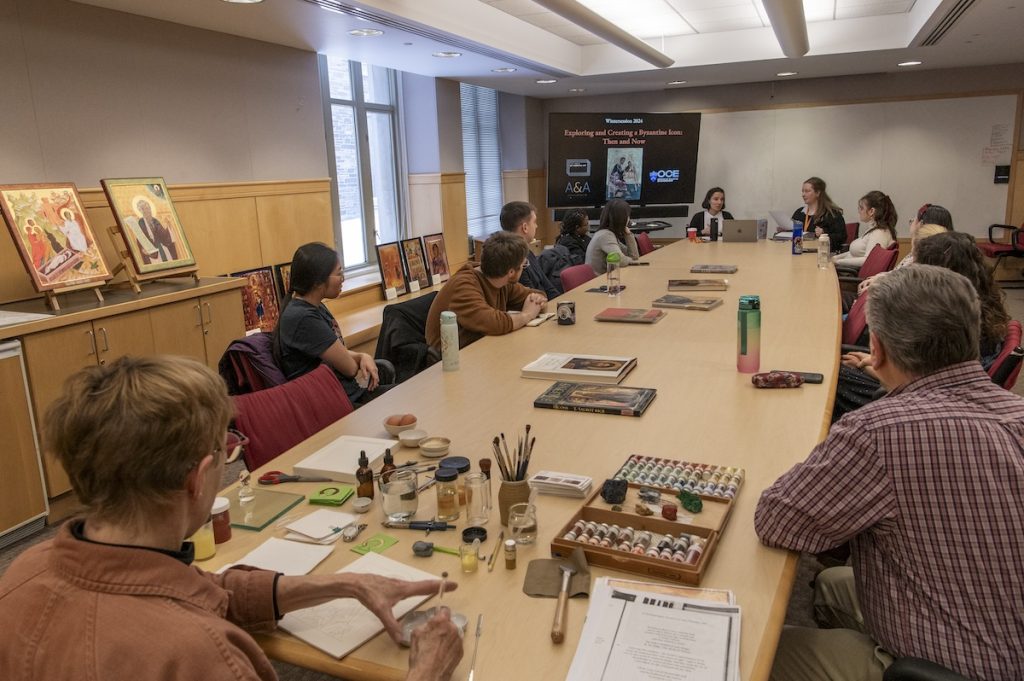

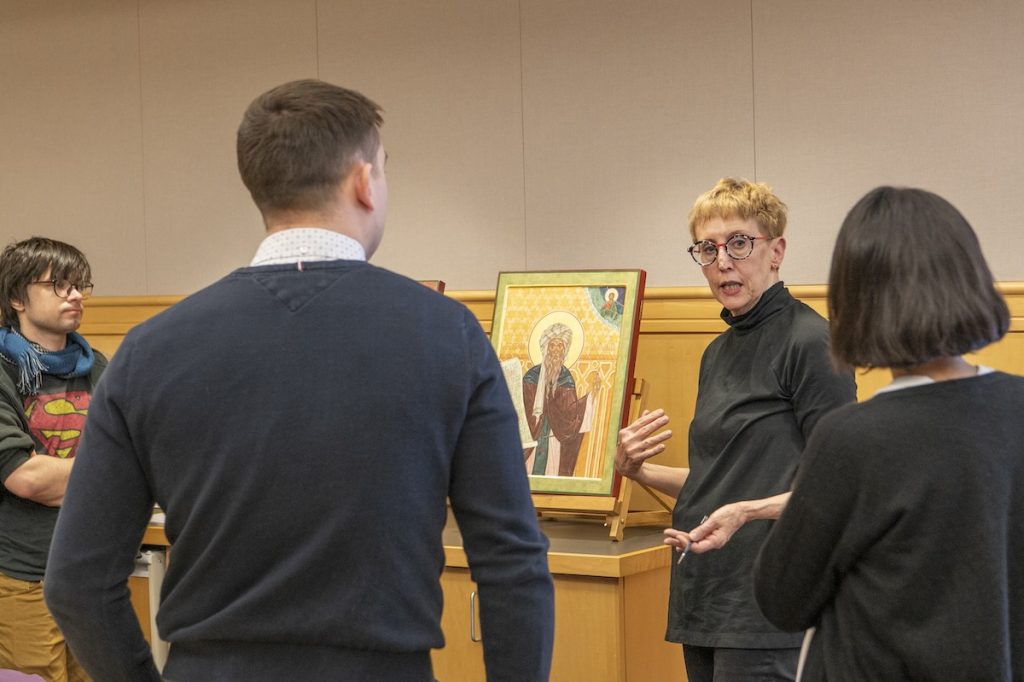
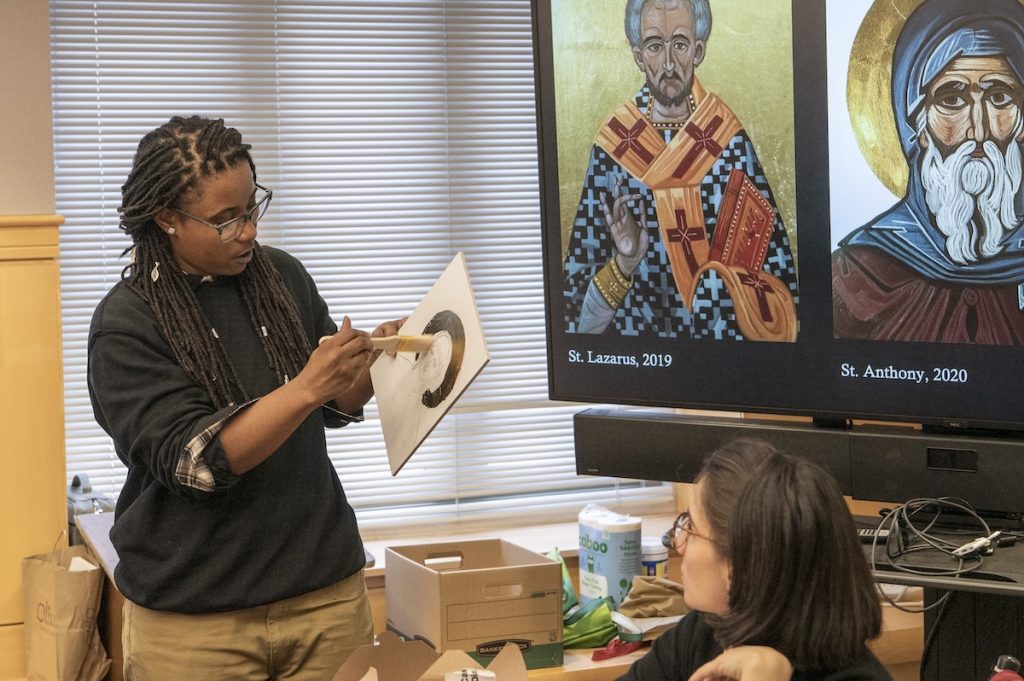
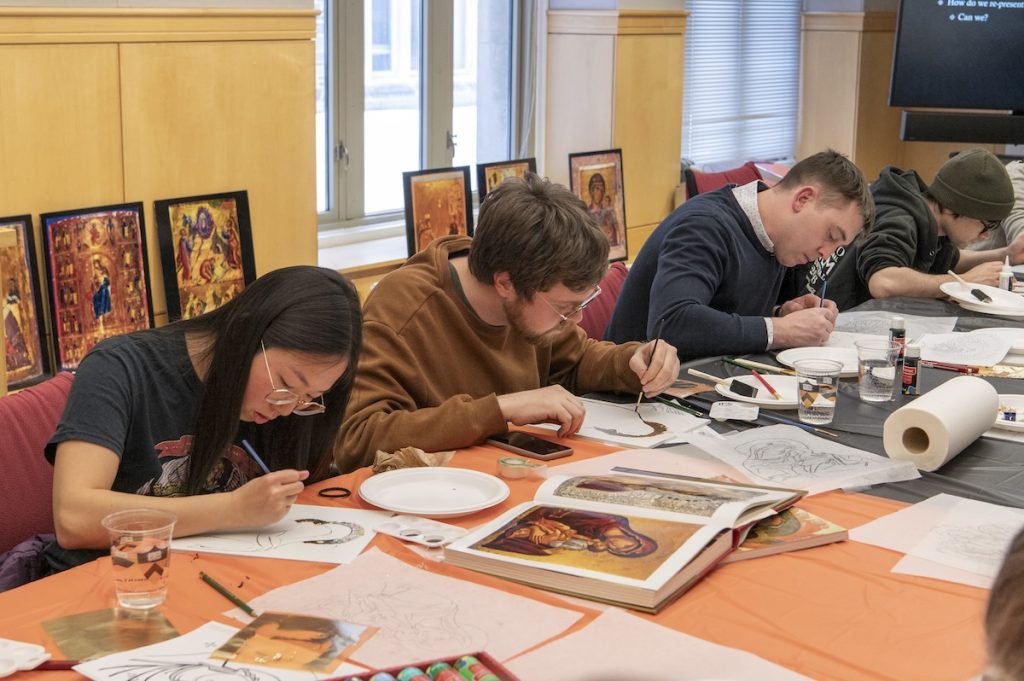
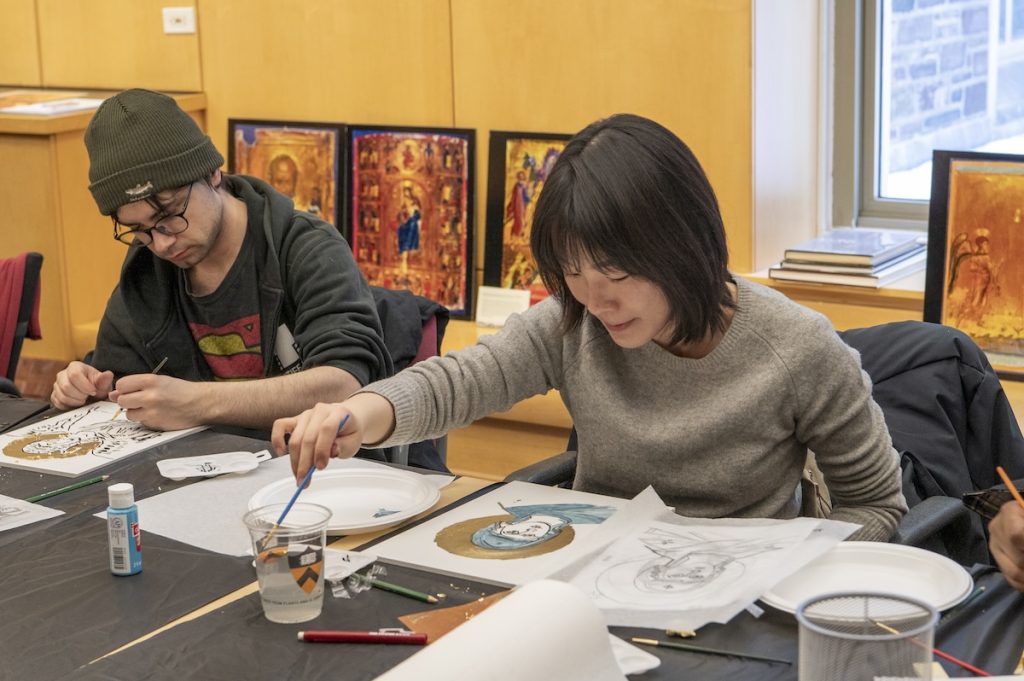
Are you interested in learning more and researching icons at the Index? Here are some general tips for starting an Index search about Byzantine icons, especially if you do not know exactly which icon you are looking for!
However, these results might be too broad, so if you want to refine them you can keyword search the word “Byzantine” on the upper right search window of the database, and then filter by these other controlled terms we just mentioned, such as Work of Art Type “panel” or Medium “wood.” But if you want even narrower results, or if you know the iconography you are interested in, such as the iconography of an angel, or searching for angels by name, as in the case with the Annunciation image, you can filter by the Subject “Gabriel the Archangel.”
If you have any questions about starting research with the Index resources, fill out our inquiry form and we will be in touch: https://ima.princeton.edu/research-inquiries/.
Finally, this Wintersession workshop could not have been possible without the generous support of the Princeton Office of Campus Engagement, the Department of Art & Archaeology, and the Index of Medieval Art. Thank you to all who helped plan and participated in this event!
As editorial staff at the Index continue cataloging our physical backfiles, which contain over 200,000 photographs of works of art in sixteen media categories, we are happy to announce that at last, all our print records of gold glass objects have been fully digitized in the Index database! In gold glass, an image in gold leaf is fused between layers of glass. Gold glass was a favored art form in Hellenistic Greece and during the Roman period, often decorating the bases of feasting vessels, such as bowls, cups, and plates, with hidden pictures that would slowly be revealed during the consumption of food and wine. The newly digitized “Gold Glass” backfiles document over 650 objects from about 60 locations. Most examples are identified as vessels, medallions, or plaques (Fig. 1).
The glittering portraits on these glass objects, now mostly fragmentary, are usually bust length and often show whole families. These are classified under the Index subject “Family Group,” while the subject “Married Pair” is used for images depicting a bride and groom, sometimes crowned by Christ. Gold glass objects are frequently associated with marriage celebrations, and several pieces retain the names of the men and women depicted with inscriptions of good wishes. Frequently, this inscription is the Latin drinking toast “PIE ZESES” (“Drink to live,”), either in full or abbreviated, although a fourth-century gold glass fragment from Rome, now in the British Museum, bears the more sentimental words “DVLCIS ANIMA VIVAS” (“Sweet soul, may you live [long]”) around the heads of the newlyweds (Fig. 2).

Several gold glass objects contain other paired figures, especially Peter and Paul the Apostles, as the patron saints of Rome, and Adam and Eve, commonly represented in the Fall of Man scene. Old Testament narratives and figures, such as Moses, Abraham, Daniel, and Jonah were popular, and Christian miracles were also frequently depicted on vessels. The Index database contains just over fifty miracle scenes executed in the gold glass medium, including the Raising of Lazarus, the Miracle of Loaves, and the Wedding at Cana, suggesting that healing themes held some favor among patrons. The objects may also have served a commemorative function.
Some surviving gold glass objects contain Jewish iconographic motifs, including the Temple implements, such as the menorah, shofar, etrog, and Torah Ark. These implements can be found in the Index database by browsing the Subject list, or by searching for “gold glass” as a term and filtering by the Style/Culture “Jewish.” Mythological figures and narratives from the classical world were also favored subjects to depict on gold glass vessels. The Herculean labors, sea-nymphs, and cupids can be identified on some fragments. Other well-represented motifs in the medium include the “Good Shepherd,” which has iconographic connections to the ancient Greek ram-bearing cult figure Kriophoros. There remains much to discover and assess about images in gold glass and their meanings, production, and patronage throughout the late antique, Roman, and Byzantine periods, making the Index an essential study tool. Now, with increased access, more researchers can learn how this rather fragile art form documents fashion, commerce, rituals, and historical names and epigraphs from ancient daily life (Fig. 3).

The Index gold glass backfiles received significant attention by Ryan Gerber, our 2019 summer intern from the Rutgers School of Communication, who is now a Marquand Art Library Collections Specialist. Gerber inventoried the collection and wrote about his impressions in a blog post called “A Face in Gold Glass.” After Henry D. Schilb, Index Art History Specialist in Byzantine Art, finished adding the collection with the help of Gerber’s inventory, he noted that many gold glass objects recorded in major nineteenth century catalogs did not survive into the modern era. Thus, the publications that earlier Index catalogers used in their research may have contained the last known record of an object’s existence. Schilb said, “it was surprising to learn that many of the gold glass objects entered into the Index files have been lost to time, and at least one of them was apparently reduced to dust in the collection where it was last recorded. Not surprisingly, we have also simply lost track of several examples that were originally cataloged by Indexers before the Second World War.” With too little information to go on, the Index cataloger can sometimes upload only a drawing from the catalog and record only a “Last Known Location” for objects presumed lost to history. When we just don’t know where something is, we indicate this in the database by giving “Unknown” as the current location with a “Last Known Location” to identify the place where an item was last known to exist. This can apply to items that we know to have been destroyed, but it also applies frequently to items that are either simply lost or are now in unidentified, private collections. Although the Index can sometimes discover an object’s true current location, that bit of data can sometimes elude us, so we always welcome intelligence from anyone who might have a good lead!
It is a great achievement when we can complete an entire category in the backfiles with newly researched information, including updated location names, fuller iconographic descriptions, and new or updated terms from Index vocabularies to expand the findability of work of art records. We ought to be clear, however, that we do not claim to have recorded every known example of any medium or type of object. That must remain an ongoing project. Nevertheless, the whole Index team is thrilled to make the gold glass corpus of the original Index card catalog fully available in the database. If you want to see for yourself, you can browse “gold glass” records by Medium more fully here: https://theindex.princeton.edu/s/list/ListMediums.action. You can also reach out to us with any inquiry here: https://ima.princeton.edu/research-inquiries/. Please let us know how the Index can improve the records we have, or find out how the Index can serve your own research needs.
Cheers!
Further Resources
Garrucci, Raffaele. Vetri ornati di figure in oro: Trovati nei cimiteri dei cristiani primitivi di roma. Rome: Tipografia Salviucci, 1858.
Deville, Achille. Histoire de l’art de la verrerie dans l’antiquité. Paris: Morel, 1871.
Vopel, Hermann. Die Altchristlichen Goldgläser: Ein Beitrag zur altchristlichen Kunst- und Kulturgeschichte. Freiburg im Breisgau: J. C. B. Mohr, 1899.
Morey, Charles Rufus. The Gold-Glass Collection of the Vatican Library: With Additional Catalogues of Other Gold-Glass Collections, ed. Guy Ferrari. Vatican City: Biblioteca apostolica vaticana, 1959.
Meek, Andrew. New Light on Old Glass: Recent Research on Byzantine Mosaics and Glass. London: British Museum Press, 2013.
Howells, Daniel Thomas. A Catalogue of the Late Antique Gold Glass in the British Museum. London, British Museum Press, 2015.
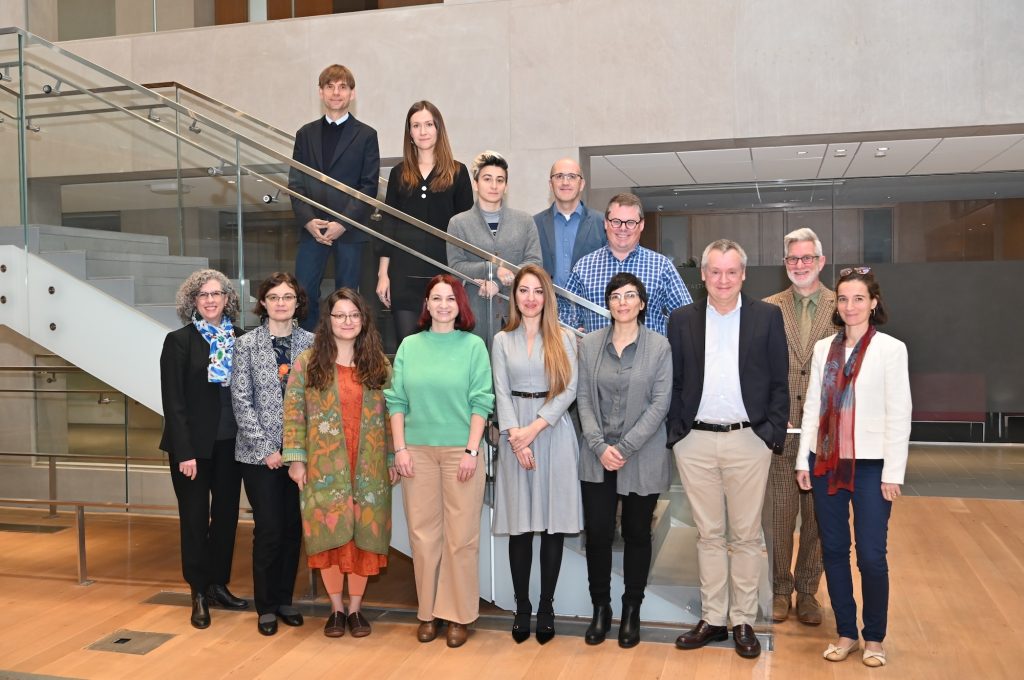
For the second year, the Index of Medieval Art was pleased to offer the Graduate Student Travel Grant in an effort to support a non-Princeton student who wishes to attend the Index conference in person. The recipient this year was Anahit Galstyan, a PhD student in the Department of History of Art and Architecture at the University of California, Santa Barbara, who joined us in Princeton on November 11 and attended the “Whose East?” conference. We are glad to share her thoughts.
“It was an immensely enriching experience, and I found great enjoyment in the proceedings. The presentations were not only intellectually stimulating but also delivered with an engaging flair that made the entire event thoroughly enjoyable. I would like to extend my heartfelt thanks for the generous grant that made my participation in this conference possible. Without such support, this experience would have remained beyond my reach. I think that by facilitating students’ attendance through the Graduate Student Travel Grant, the Index of Medieval Art contributes to the broader dissemination of knowledge and the fostering of academic dialogue.
“I found great merit in the engagement of the meticulously curated selection of participants in exploration and reevaluation of the entrenched dichotomies between East and West, Islam and Christianity. The discussions surrounding cultural interactions within the expansive region of the Eastern Mediterranean and beyond also further contributed to the recent scholarly discourse on questioning the traditional disciplinary predisposition of Byzantine studies to prioritize its metropolitan center, this way contributing to the reshaping of the dominant narratives in our field.
“Given my focus on the culturally and socially diverse medieval city of Ahlat and its funerary architecture, the exploration of intercultural exchanges at the event deeply resonated with my own work, making it not just intellectually engaging but also personally significant. I enjoyed all the presentations, with one of the standouts being Christian Raffensperger’s talk on the classification and categorization of Rus in medieval times. His insights provided a refreshing perspective that challenges established norms in the field. Anthi Andronikou’s presentation on interfaith dynamics between Eastern Christian and Islamicate art was also especially captivating among the various talks.
“I want to particularly highlight Gohar Grigoryan’s presentation, which provided a fascinating glimpse into first-hand accounts, shedding light on the intricate dynamics of Armenian elite self-fashioning in the thirteenth-century geopolitical context. It was particularly noteworthy in challenging the traditional view of a relatively uniform Armenian society during that era. Her paper was not just intellectually engaging but also skillfully presented, prompting me to reflect on my own research on identity creation. Grigoryan’s work emphasized the importance of examining the individuals I study not only in relation to external political dynamics but also in relation to each other, encouraging a more nuanced exploration of subtle expressions of personal identity. Additionally, Erik Thunø’s exploration of South Caucasian cross steles added another dimension to my understanding, urging me to consider similar cultural expressions beyond simple transmission.
“While attending the conference was truly delightful, I was also thrilled to have the opportunity to visit the numismatics collection. Handling and closely examining Byzantine, Cilician Armenian, and Seljuk coins was a highlight for me – an opportunity that I doubt I would have had as a grad student otherwise. Additionally, spending time in the Index was a wonderful experience. Dr. Maria Alessia Rossi and Dr. Henry D. Schilb provided invaluable assistance in navigating both physical and online catalogs to trace some types of funerary objects I study, such as censers and lamps, that are scattered across different collections worldwide. Finally, I am immensely grateful to Professor Pamela Patton for her generous hospitality and to Fiona Barrett for ensuring that I was well-fed throughout my stay.”
And we thank YOU, Anahit, for your thoughtful comments and for sharing your experience with the Index readers!
Anahit Galstyan is a PhD student in the Department of History of Art and Architecture at the University of California, Santa Barbara. Her research focuses on Christian-Islamic interactions in medieval Anatolia as manifested in the transculturation and the transmission of architectural knowledge.
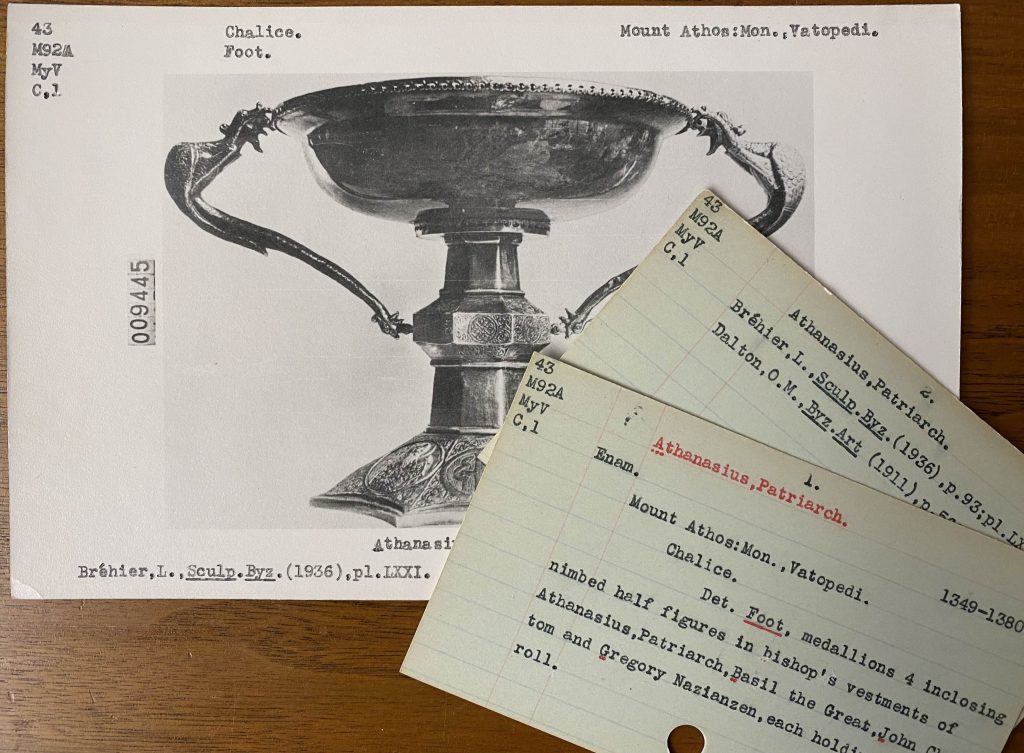
We are excited to announce a short-term graduate opportunity at the Index of Medieval Art! This is a two to three-month remote, part-time research opportunity to help incorporate key works of art on Mount Athos into the Index database. The position would require the student to examine the Index legacy records, update the metadata, identify new color images, and incorporate them into the online database. They will be trained in Index norms in cataloging works of art, describing the iconography, transcribing inscriptions, and adding bibliographic citations.
The position is part of a new multi-year project, Connecting Histories: The Princeton and Mount Athos Legacy, that aims to create an international team of faculty, staff, and students that will explore and bring awareness to the rich, complex, and remarkable historical and cultural heritage of Mount Athos, and its connection to Princeton. This opportunity offers a stipend of $2,500 and has been generously funded by the Seeger Center for Hellenic Studies, with the support of the Dimitrios and Kalliopi Monoyios Modern Greek Studies Fund and Art & Archaeology Department at Princeton University.
The deadline for applications is December 1, 2023. For more details about eligibility criteria and the application process, please visit the “Announcements” page on the Connecting Histories website.
Index staff have been busy at the Index working on a variety of projects and launching free public access to the database, which officially opened on July 1, 2023. It has been wonderful to see a warm reception from researchers, and recent user statistics show that the Index database is reaching hundreds of unique users per day.
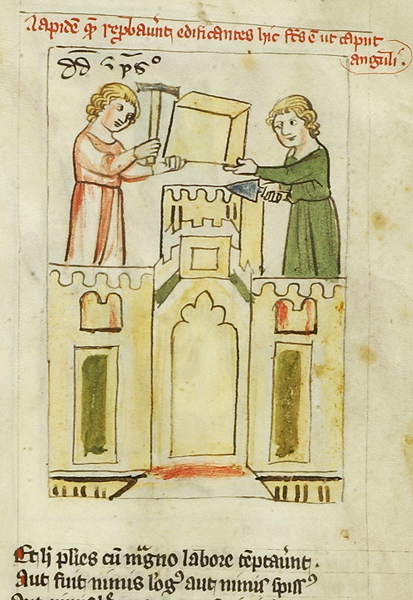
We will continue offering Zoom tutorials and the next one is planned for the Spring 2024 semester. If you have been wondering how to get the best results out of your searches and see more about what the Index covers, please stay tuned for the next date, or write to us directly with your research inquiry!
We’re still accepting applications for the student travel grant award to attend this year’s Index conference in person (Deadline, 1 October 2023). Up to $500 will be reimbursed for a non-Princeton graduate student who wishes to attend the conferences but lacks the financial resources to do so. To see the full eligibility and apply, follow this link: https://ima.princeton.edu/graduate-student-travel-grant/.
The Index conference “Whose East? Defining, Challenging, and Exploring Eastern Christian Art” will take place on Saturday, 11 November 2023 in Julis Romo Rabinowitz A17 at Princeton University from 8:45am to 5:15pm (EDT).
Please note registration is not needed to watch the livestream, and the conference will be broadcast live at this link: https://mediacentrallive.princeton.edu/.
This blog post is the seventh in a series focusing on members of the Index staff. Today we introduce Jon Niola.
What is your role at the Index?
I am the Information Technology Manager here at the Index. I manage the day-to-day technology needs of the Index. That includes everything from managing virtual machines on the cloud to deploying new computers for staff or writing code to enhance the accessibility of our web applications.
Before working for the Index, what was the most interesting job you had?
In the late 1990s I worked at a technology startup in New York City trying to improve Internet search. We used algorithms to make a search more appropriate to the context. For example, if you searched for the keyword “jaguar,” were you searching for the automobile or the animal? Our algorithms used recent searches and site visits to try and narrow the scope.
When you’re not working at the Index, what do you like to do in your spare time?
If the weather cooperates, I absolutely love to hike, and I spend quite a bit of time on the trail, getting some exercise and fresh air and enjoying the tranquility.
Do you have a favorite work of art or favorite place you’ve visited?
Sainte-Chapelle in Paris. I had always planned on visiting it when I went to Paris, but to me it was just a bucket list, “must do” item. I never expected it to be so incredible in person. I had a few thousand dollars of camera gear with me, and no photo I took does justice to the beauty of it, especially the upper chapel with the incredible stained glass.
What’s your favorite building or spot to sit on campus?
This is a tough call. I can’t choose between Nassau Hall and the university chapel.
The chapel is beautiful, and at certain times of the day when the angle of the sun is right, you get these beautiful colors on the stone as the sun filters through the stained glass.
The history buff in me appreciates Nassau Hall. The fact that it once served as the capitol of the United States is fascinating to me. We are blessed with a lot of great local history.
Coffee or tea?
Yes. I often drink coffee in the morning, but I do love a good tea.
This blog post is the sixth in a series focusing on members of the Index staff. Today we introduce Fiona Barrett.
What is your role at the Index?
My role at the Index is that of Office Administrator/Coordinator. The exciting part of my job, which is not at all traditional (in the administrative sense), is that I am able to assist where/when needed in the Index database and library. If you’ve seen the #IndexHumpDay posts on social media, you’ll see my weekly interaction with iconography—a variety of camels depicted across media, geographies, and time periods.
Before working for the Index, what was the most interesting job you had?
Before working for the Index, I worked in market research for twenty-five years, which—while interesting and challenging at times—in no way compares to my experience here at the Index. I’m very grateful to be exposed to all of this art history, and lucky enough to have colleagues who take the time to explain things to me when needed.
When you’re not working at the Index, what do you like to do in your spare time?
Hmm … a few of my favorite things: cooking, eating, entertaining, reading, gardening, traveling, listening to music (especially my husband’s 😊), and I love spending time with family and friends; they are one and the same.
Do you have a favorite work of art or favorite place you’ve visited?
I spent part of my childhood growing up in Ireland, but I truly didn’t appreciate the country and the history until I was in my early thirties. I was lucky enough to travel back a few times, with my father and then with my son. I would go again in a heartbeat! This year I am planning to travel to Italy, which has been on my bucket list for quite some time.
What do you like best about being back on campus in person?
Now that we’re back in person, and I am working with colleagues face-to-face, it’s great to be able to have our in-person conferences and workshops once again. This past conference—“Looking at Language” in November 2022—brought together over fifty attendees, and seven of the eight speakers were able to present in person.
Coffee or tea?
YES, PLEASE!
We are excited to announce that the mosaics of St. Sophia Cathedral in Kyiv are now live in the Index database! Thanks to a Flash Grant from the Princeton University Humanities Council, Dr. Julia Matveyeva, Associate Professor in the Department of Fine Arts and Design of the O. M. Beketov National University of Urban Economy in Kharkiv, joined the Index remotely for the last five months to work on Ukraine’s medieval cultural heritage. Find out more about St. Sophia Cathedral, the work of an Index cataloger, and Dr. Matveyeva’s research at this link.
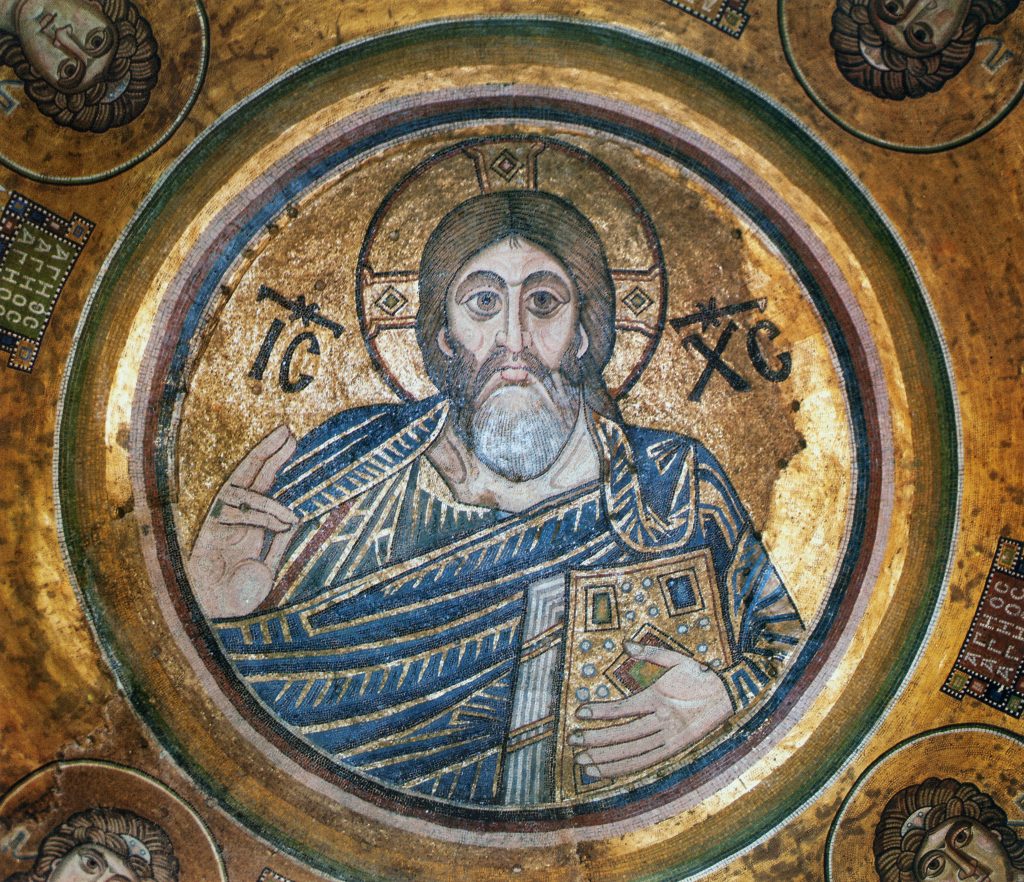

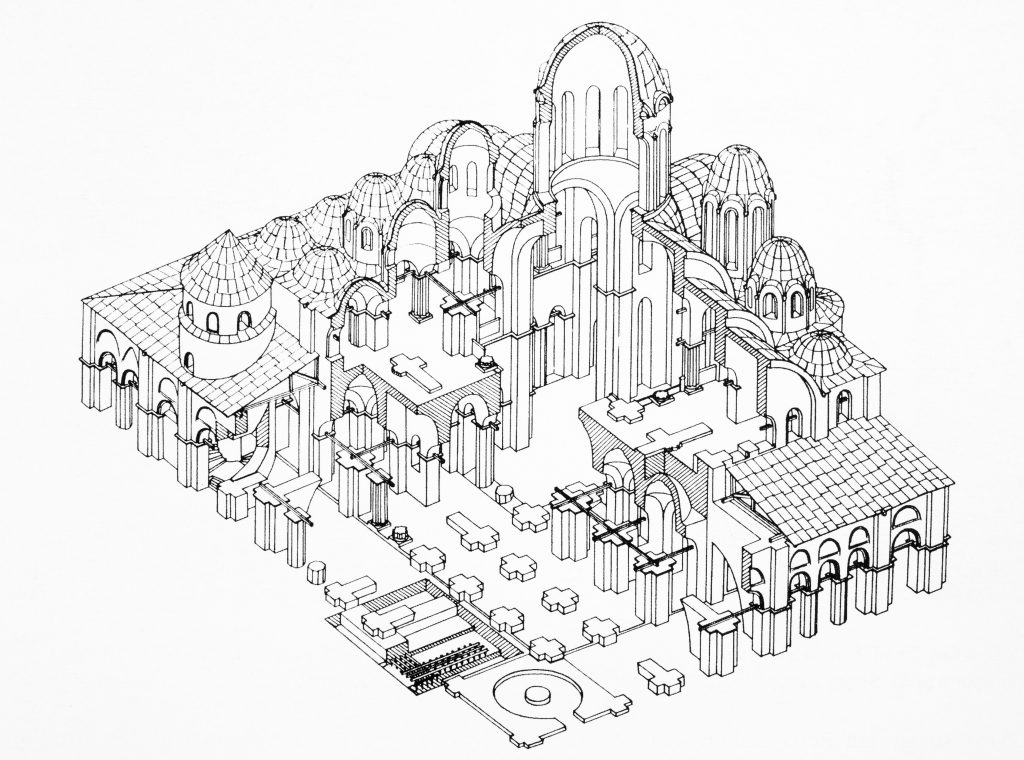
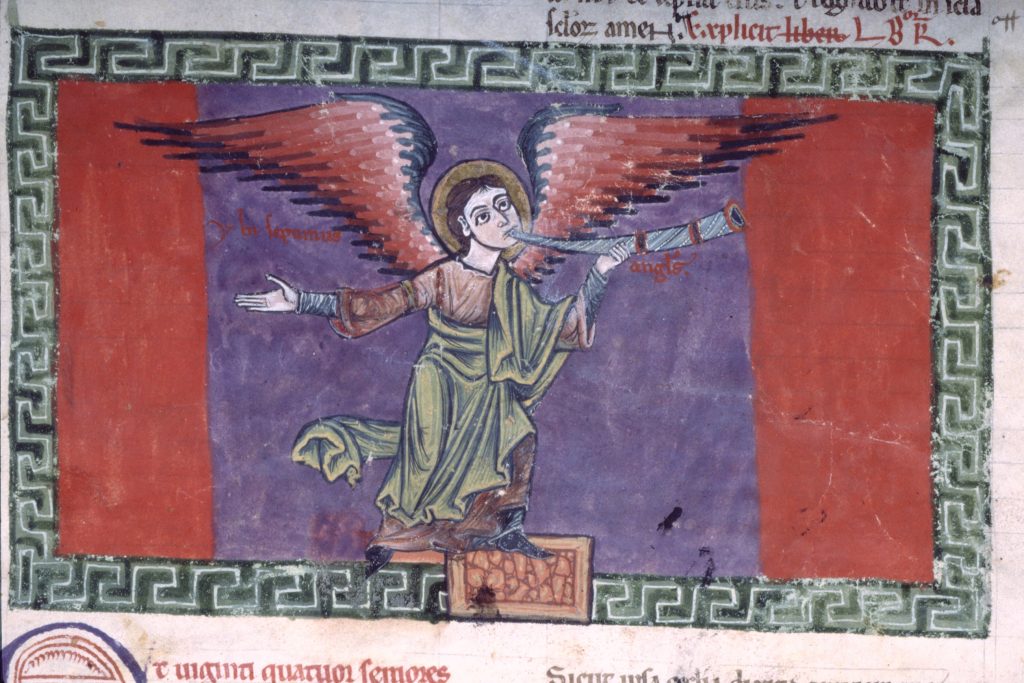
Registration for the November conference Looking at Language, taking place Saturday, 12 November 2022 is now live! The Index has two exciting announcements in connection to the conference:
For the first year, the Index will offer one graduate student travel grant for a non-Princeton student who wishes to attend the conferences but lacks the financial resources to do so. The grantee will be invited to participate in all aspects of the conference, including the speaker lunch, and to pursue research at the Index if their visit schedule permits. Review the eligibility requirements and the application process here.
On Tuesday, 8 November 2022, 12:00 – 1:00pm EDT, the Index will be holding a workshop on Zoom titled Looking at (Index) Language: A Dive into Taxonomy at the Index of Medieval Art. This workshop is open to anyone interested in learning about Index language standardization practices and preferred terms in Index cataloging. Find out more about the workshop and how to register here.